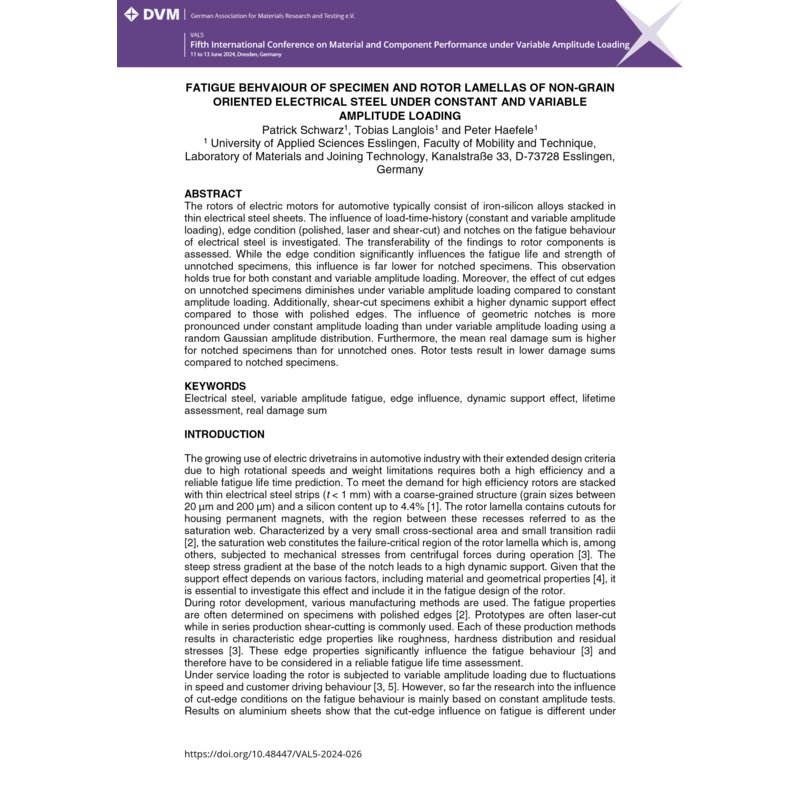- Online only



Thin electrical steel strips are functional materials whose task is to improve the efficiency of electric motors. In packages of a large number of individual laminations, the sheets form the rotor of an electric machine. The main characteristics of this group of materials are large grain sizes up to 200 µm and a silicon content between 1 % and 4.5 %. The lamella are are produced with varying cutting processes in the different development stages. Due to centrifugal forces and changing rotational speeds, the lamella of the rotor are subjected to cyclic loading. The failure-critical area of the rotor are the webs between the pockets of the permanent magnets which are characterized by a sharp notch (notch radius 0.35 mm) and a small cross-section (A ≈ 0.45 mm2).
In…

Datenschutzbedingungen (bearbeiten im Modul "Kundenvorteile")

Lieferbedingungen (bearbeiten im Modul "Kundenvorteile")

Rücksendebedingungen (bearbeiten im Modul "Kundenvorteile")
Thin electrical steel strips are functional materials whose task is to improve the efficiency of electric motors. In packages of a large number of individual laminations, the sheets form the rotor of an electric machine. The main characteristics of this group of materials are large grain sizes up to 200 µm and a silicon content between 1 % and 4.5 %. The lamella are are produced with varying cutting processes in the different development stages. Due to centrifugal forces and changing rotational speeds, the lamella of the rotor are subjected to cyclic loading. The failure-critical area of the rotor are the webs between the pockets of the permanent magnets which are characterized by a sharp notch (notch radius 0.35 mm) and a small cross-section (A ≈ 0.45 mm2).
In literature the influence of the cut-edge conditions on the fatigue behaviour and of the dynamic support effect of electrical strip so far mainly focuses on constant amplitude loading on specimen. The objective of this paper is the influence of variable amplitude loading on the cut-edge and on the notch effect. The fatigue tests have been carried out with two electric strips N030-15 and NO30-19 with constant and variable amplitude loading using a random Gaussian amplitude distribution with polished, shear cut and laser cut edges both with unnotched and notched specimen. For the transferability of the results from specimen to components fatigue tests with both types of loading are currently done on lamella of rotors, see Fig. 1. In addition strain-controlled fatigue tests with polished, shear cut and laser cut edges are conducted to get the cyclic material parameters for different edge conditions.
The results under constant amplitude show a high dynamic support effect for both material and a pronounced cut-edge influence for unnotched specimen. Under variable amplitude loading both the influence of the edge condition and the notch influence decreases, see Fig. 2.
The damage sums are calculated using a linear damage accumulation according to the Palmgren-Miner hypothesis with different modifications. The allowable damage sums depend on both the edge condition and the notch geometry For Miner elementary, notched specimens have a Dreal, 50% = 1.03 - 1.13 and unnotched specimens have a Dreal, 50% = 0.04 - 0.18. Shear-cut specimens produce the highest damage totals here.